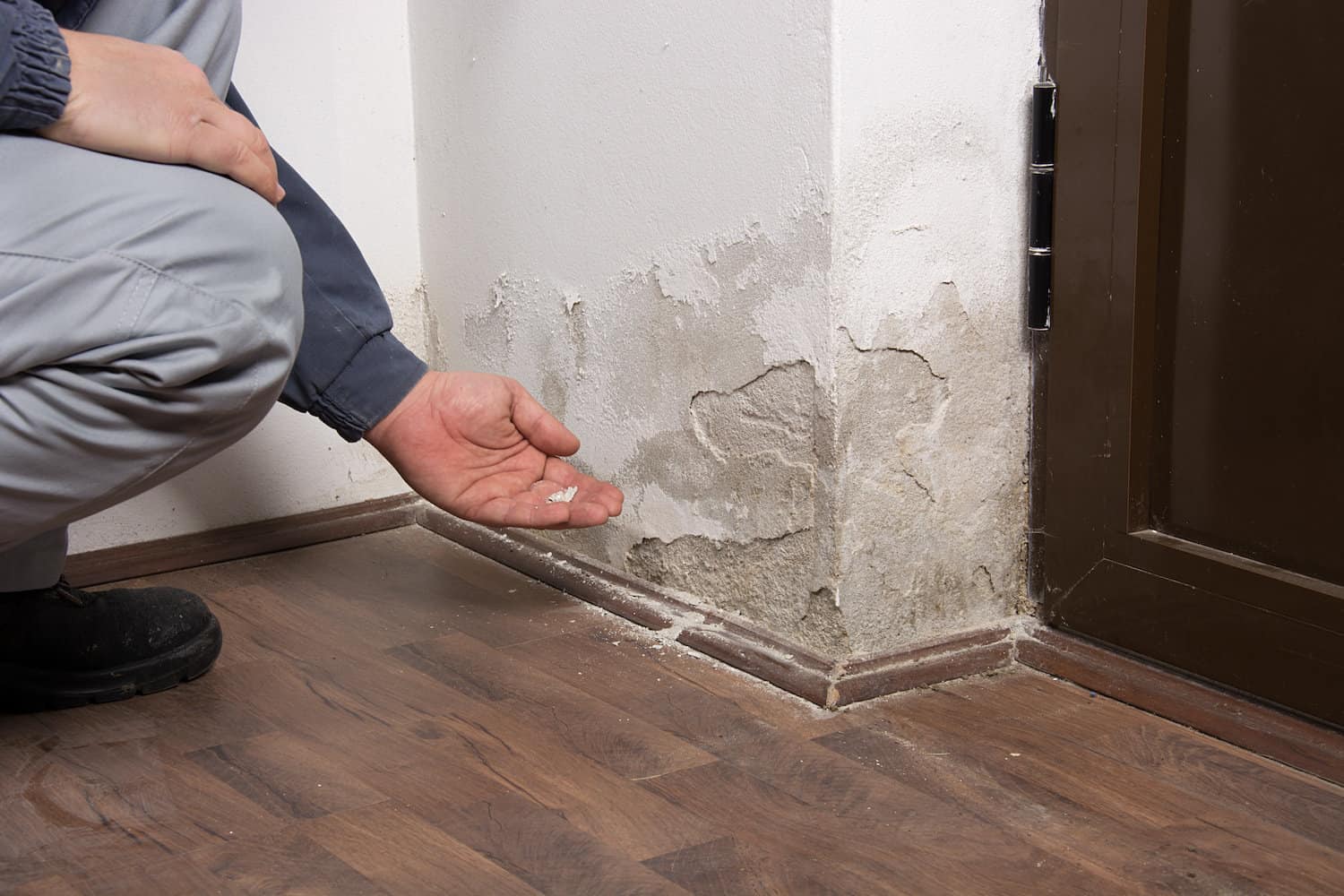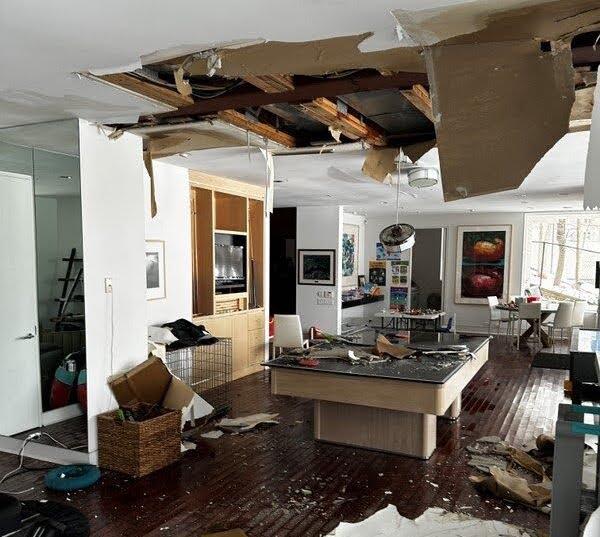The Refine of Water Damage Cleaning: Ensuring Your Home Is Restored Successfully
Water damages can be a challenging difficulty for home owners, necessitating a organized and careful cleaning procedure to recover safety and security and functionality. damage restoration services. Following this, effective water extraction methods play a pivotal duty in reducing more harm.
Evaluating the Damage
Upon discovering water damage, the first step is to thoroughly assess the extent of the effect. This preliminary analysis is crucial, as it helps determine the necessary steps for effective cleaning and restoration. Begin by examining the affected areas, consisting of wall surfaces, ceilings, floorings, and individual valuables, to identify the source of the water intrusion, whether from flooding, leaks, or condensation.
Documenting the damages is essential for both insurance coverage claims and preparing remediation initiatives - damage restoration services. Use photos and composed notes to catch the severity of the damage, keeping in mind any type of affected architectural aspects and materials. Pay unique interest to locations that may not be promptly visible, such as behind wall surfaces and under rugs, as hidden dampness can result in more issues, including mold and mildew growth
In addition, examine the timeline of the water exposure. The longer the products continue to be wet, the greater the capacity for damages. Comprehending the period of exposure will certainly inform the necessity of remediation initiatives. Ultimately, a comprehensive evaluation prepares for an effective water damage cleaning procedure, guaranteeing that all affected locations are attended to efficiently and extensively.
Water Extraction Methods

Experts commonly employ submersible pumps for larger volumes of water, which can quickly minimize flooding in basements or various other impacted locations. For smaller quantities, wet/dry vacuums are typically utilized to draw out recurring wetness from rugs and difficult surface areas. Furthermore, utilizing mobile extractors enables targeted elimination in constrained rooms or locations with fragile products.
In instances of polluted water, such as sewage or floodwater, advanced extraction strategies might include the usage of biohazard devices to guarantee safety and compliance with wellness laws. High-powered removal tools are essential in minimizing water retention in architectural products, which can cause mold growth and architectural wear and tear if not addressed without delay.
Inevitably, the performance of water extraction methods plays a critical function in the general success of the water damage cleanup process, preparing for subsequent restoration initiatives.
Drying and Dehumidification
When standing water has been properly drawn out, the next critical stage in the water damage cleaning process is drying out and dehumidification. This step is necessary to prevent additional damage and mold and mildew growth, which can happen within 24 to 48 hours in wet atmospheres.
To achieve efficient drying, specific equipment such as industrial-grade air moving companies and dehumidifiers is employed. Air moving companies circulate air throughout wet surface areas, improving dissipation rates, while dehumidifiers reduce humidity degrees in the air, advertising a favorable environment for drying out. The combination of these tools makes certain that wetness is attracted out from home furnishings, floors, and wall surfaces, permitting them this hyperlink to dry thoroughly.
It is vital to monitor the drying procedure very closely. Specialists commonly utilize moisture meters to analyze the dampness web content in different products, making sure that all affected areas reach appropriate dryness levels. This thorough strategy helps to stop concealed dampness pockets that can lead to structural damage or undesirable mold and mildew development.

Cleaning and Sterilizing
After the drying and dehumidification phase is total, the next important action in water damage clean-up is cleaning up and sterilizing the affected areas. This process is essential to avoid the growth of mold and mildew, microorganisms, and various other virus that grow in moist atmospheres.
The cleaning phase usually includes eliminating any type of particles, dust, and impurities from surface areas utilizing specialized cleaning up agents. For difficult surfaces, a combination of soap and water or commercial cleansing items is typically employed. Soft products, such as furniture and rugs, may call for more extensive cleaning techniques, consisting of steam cleaning or deep extraction methods, to ensure extensive hygiene.

Disinfecting complies with cleansing, using EPA-approved anti-bacterials to get rid of hazardous microbes. This step is crucial, especially in locations that may have come into call with floodwaters or sewer, as these resources can position significant health threats.
Additionally, it is necessary to address any type of continuing to be odors, which might call for making use of odor neutralizers or innovative techniques like ozone therapy. Correct cleaning and sterilizing not just restore the security and health of your home but likewise lay the foundation for effective remediation and repair services in succeeding stages of the water damage clean-up procedure.
Reconstruction and Repairs

When the evaluation is complete, remediation efforts can begin. This typically involves fixing or changing damaged materials, ensuring that all work adheres to neighborhood building ordinance and standards. For example, if drywall has actually been endangered, it will need to be gotten rid of and changed with new material. Furthermore, flooring might call for similar attention, relying on the level of water exposure.
It is vital to engage skilled restoration specialists during this procedure, as they possess the know-how to deal with complex repairs properly. Moreover, they can help minimize prospective future concerns, such as mold development or structural instability, hence guaranteeing a habitable and risk-free living setting. Eventually, reliable reconstruction and repair services restore the home's stability and enhance its overall value.
Verdict
Finally, the process of water damages cleaning is vital for recovering a home to its pre-damage problem. Each phase, from evaluating the damages to applying effective water extraction methods, adhered to by thorough drying, sterilizing, and needed repairs, plays a vital function in making certain safety and compliance with building standards. Efficient execution of these steps not only reduces instant damages yet additionally boosts the lasting honesty and worth of the home.
Water damages can be a daunting obstacle for home owners, requiring a structured and thorough clean-up process to recover security and performance. Ultimately, a thorough evaluation lays the groundwork for an effective water damages clean-up process, ensuring that all influenced locations are dealt with effectively and extensively.
Efficient water removal strategies are vital in reducing damage and preventing further issues following a water intrusion event.In conclusion, the procedure of water damages clean-up is vital for restoring a home to its pre-damage condition. Each stage, from assessing the damage to implementing reliable water removal techniques, adhered to a knockout post by detailed drying out, disinfecting, and required repair services, plays a crucial function in ensuring safety and security and compliance with building criteria.